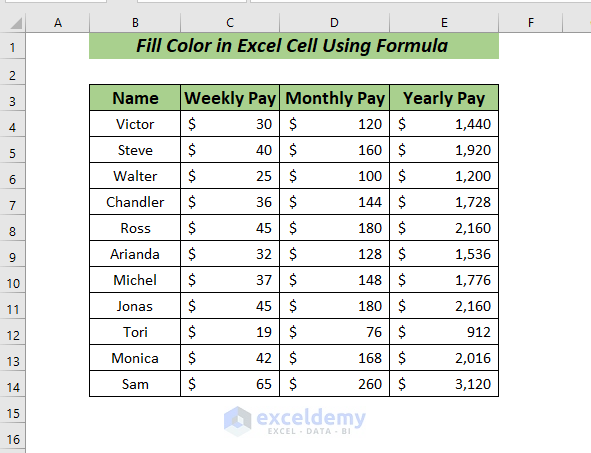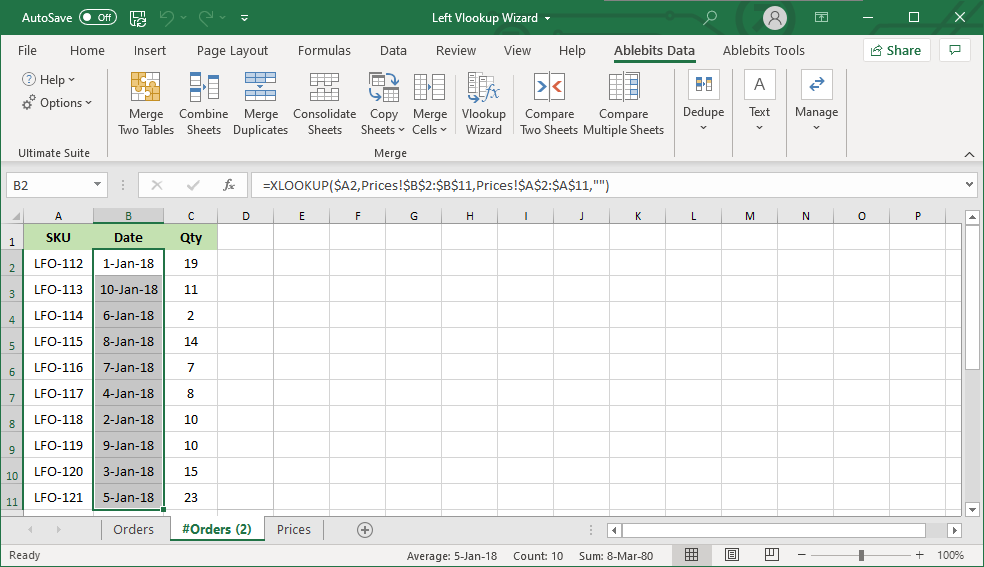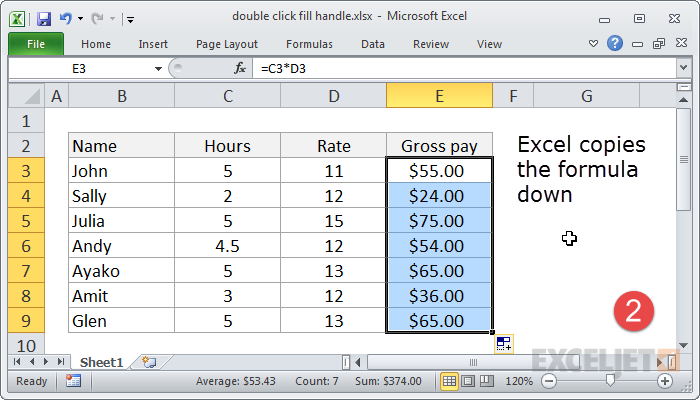

CTRL+E, so the beauty in excel will automatically fill all the names by the use of Flash Fill. First, type both the name in the single column, and by holding on CTRL key Press E, i.e. For example, if we have two separate names in two different columns.
#EXCEL FILL COLUMN WITH FORMULA SERIES#
In this case, it is to a specific cell (or series of them) in another sheet in the same workbook, which I believe is what you're trying to accomplish. What INDIRECT does is construct a complete reference to another spot in the workbook. Then, across the top of the master sheet, I've entered into a singe row the specific cell references in those various sheets from which I want to extract data. With INDIRECT, as I've used it in my own situation (which may or may not mirror yours), I've entered, in a single column of the master or summary sheet, the word/text that serves also as the label on a tab from which I want to extract date.

Nevertheless, without any further ado, what I'm guessing (in the absence of further definition of the situation) is that the INDIRECT function would work in the OP's case, and maybe even in yours you'll have to find that out. In may case, YES, Everything would be the same from one Tab to the Next as it's the same form and YES, I would manually rename each tab as they are Invoice #'s per each form.Įdit: The new Data would drop into the Master List of Data from the Tabs, to which I already have a chart set up to incorporate that data for my needs. Not to be defensive, but I would point out your opening comment doesn't serve to endear me to you. As in sometimes a quick "answer" is less helpful than a bit more back-and-forth first to make sure all parties are on the same page? You've never heard that sometimes you need to answer a question with a question (or two)?! As in sometimes, the situation needs a bit more definition. The IF function is a build-in function in Microsoft Excel and it is categorized as a Logical Function.The syntax of the IF function is as below:= IF (condition,, )….The same question as OP, but disappointed there were only follow questions versus and explanation of an actual answer. The Excel IF function perform a logical test to return one value if the condition is TRUE and return another value if the condition is FALSE. Step 7: Enter data into blank cells, range value will be re-calculated per your typing. But the range value is auto displayed as 2. You can change the color of cells by going into the formatting of the cell and then go into the Fill section and then select the intended color to fill the cell. Before learning to conditionally format cells with color, here is how you can add color to any cell in Excel. For example, we double click a cell in row 3, then a new blank row 4 will be inserted. Fill a cell with color based on a condition. A new row will be inserted under the clicked cell.

Step 6: Double click any cell among the table. And then quit Microsoft Visual Basic for Applications. Target.Offset(1).EntireRow.SpecialCells(xlConstants).ClearContents Private Sub Worksheet_BeforeDoubleClick(ByVal Target As Range, Cancel As Boolean) Step 3: In Declarations dropdown list, select BeforeDoubleClick. Step 2: In current sheet window, select Worksheet in General dropdown list. Or you can enter Microsoft Visual Basic for Applications window via Developer->Visual Basic. Select View Code, Microsoft Visual Basic for Applications window pops up. Step 1: On current visible worksheet, right click on sheet name tab to load Sheet management menu.
#EXCEL FILL COLUMN WITH FORMULA CODE#
Method 2: Auto Fill Formula When Inserting New Rows/Data by VBA Code

Please be aware that this method is only effective when inserting a new row firstly, then copy/paste data or type your data manually into the new row. Step 6: Insert two new rows, then copy and past the other two rows of missing data in to column A & B, then range value will be auto calculated properly.


 0 kommentar(er)
0 kommentar(er)
